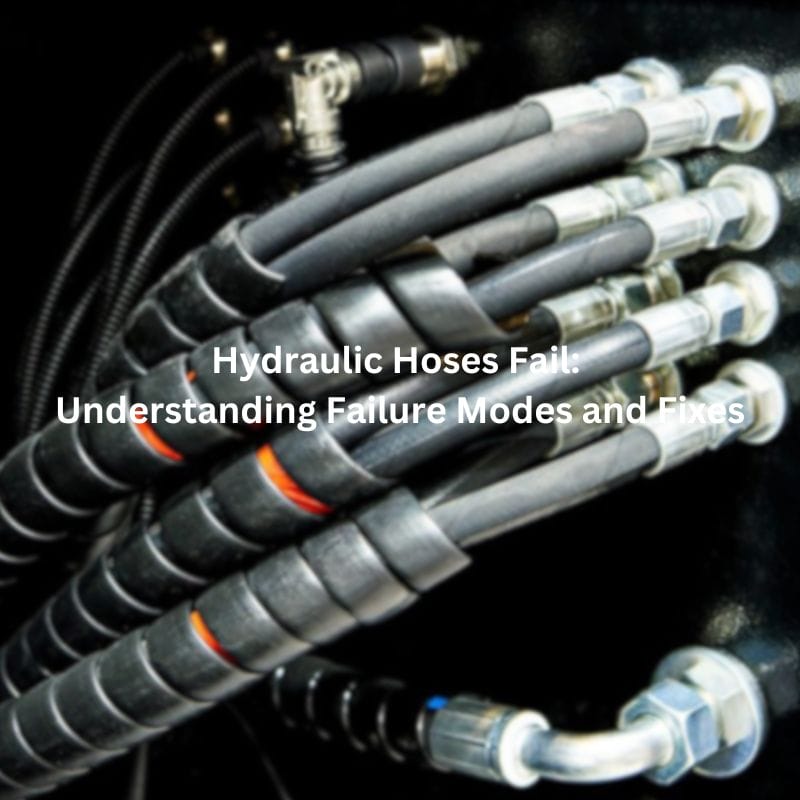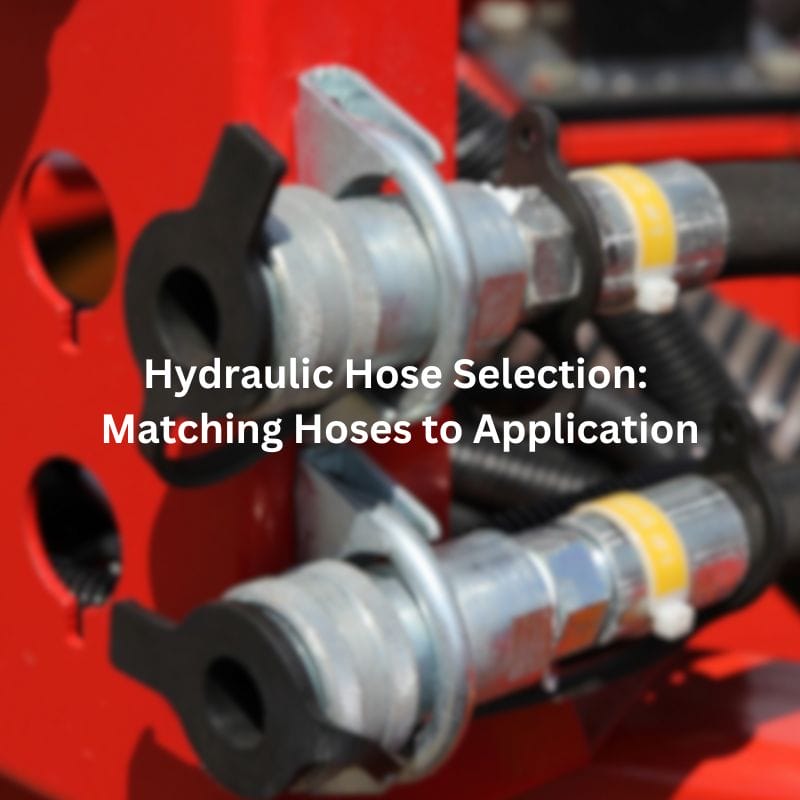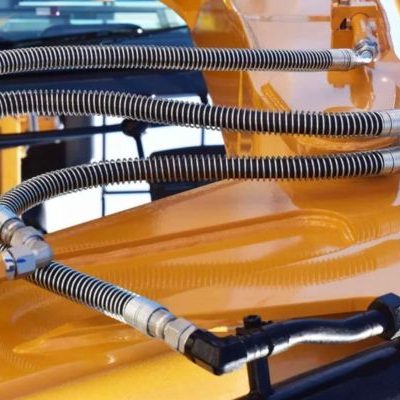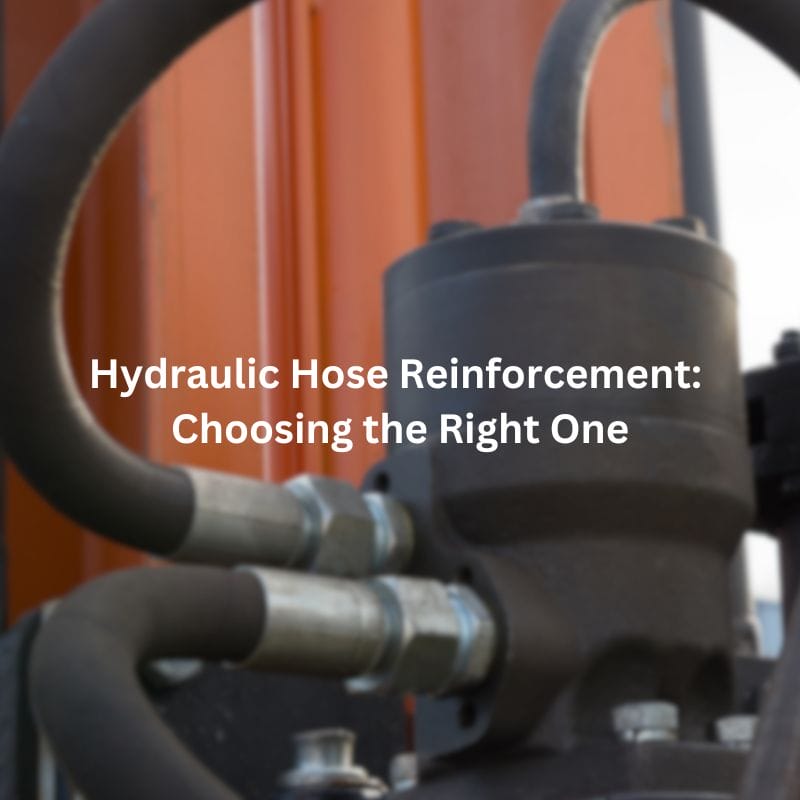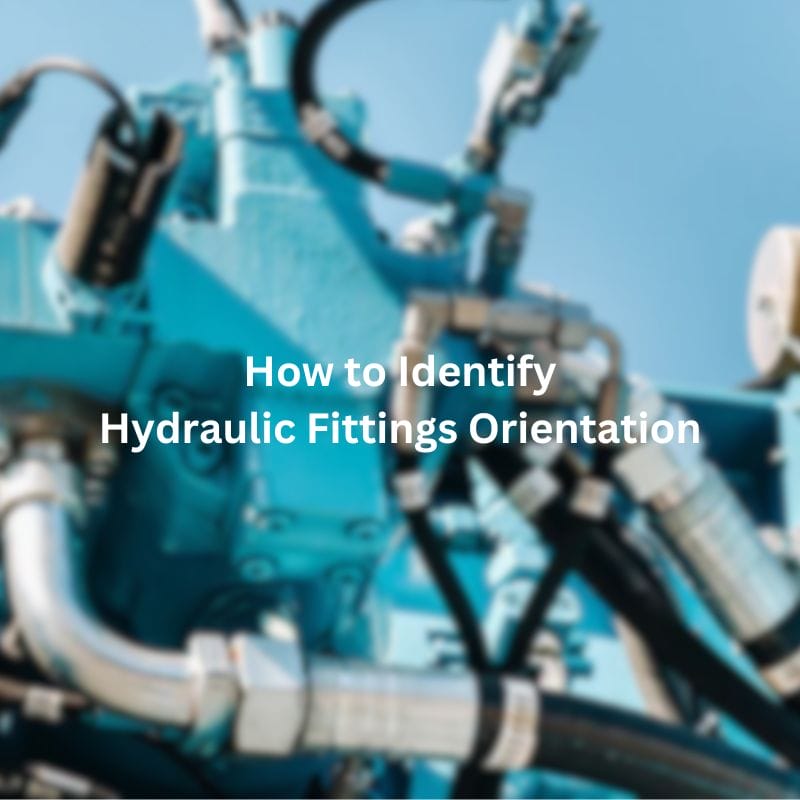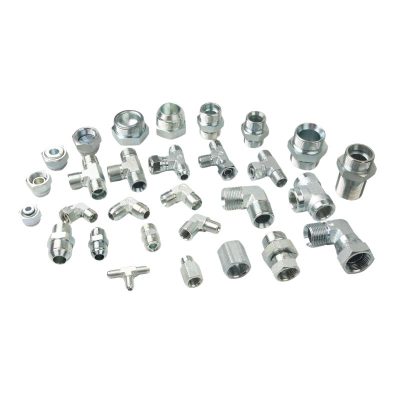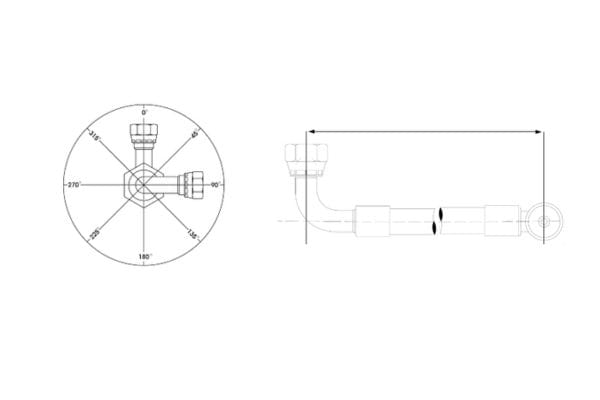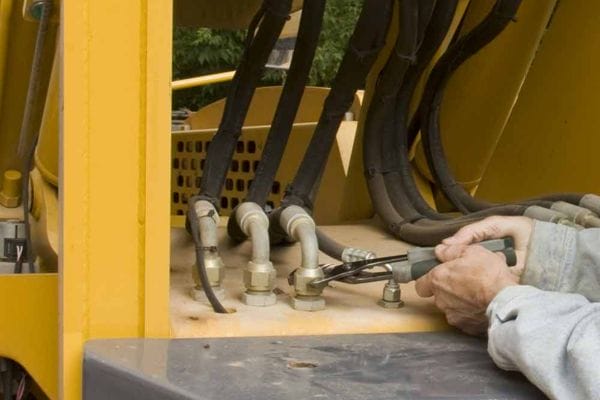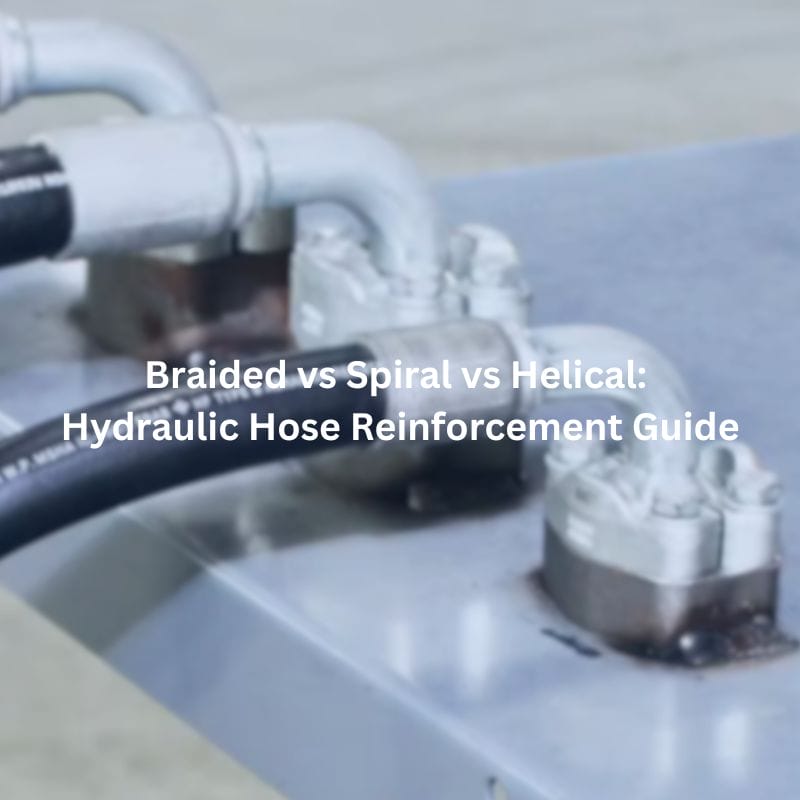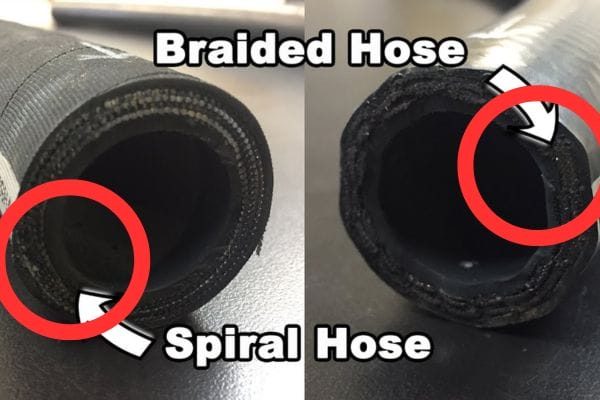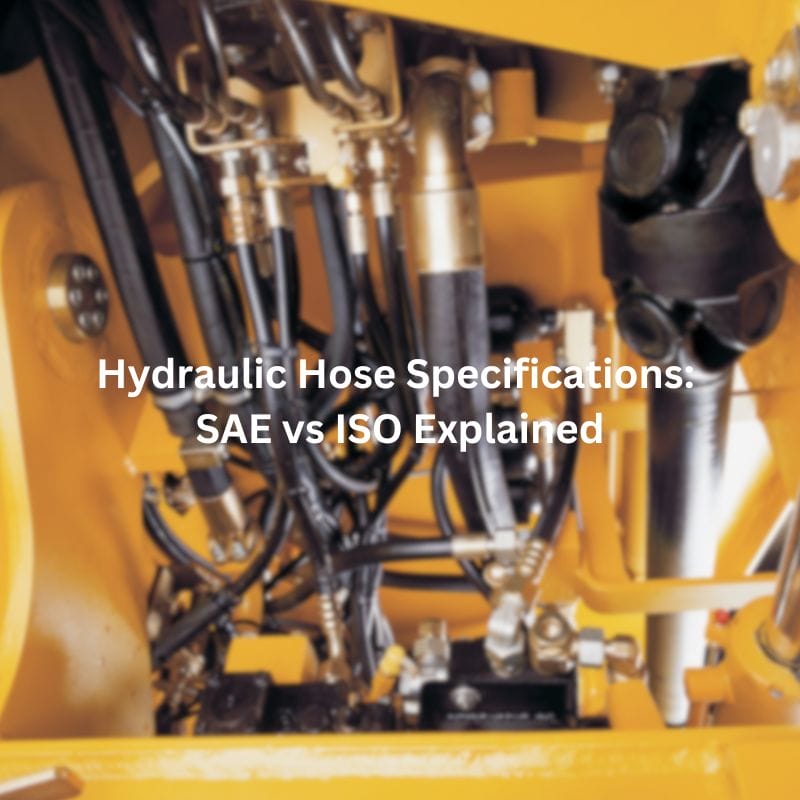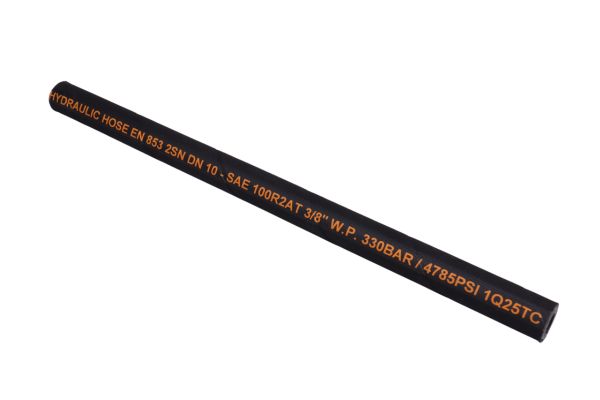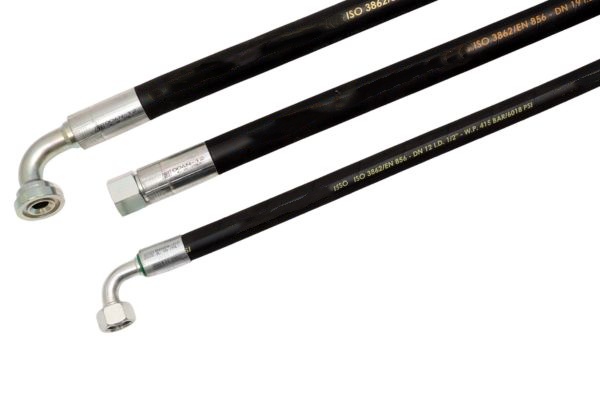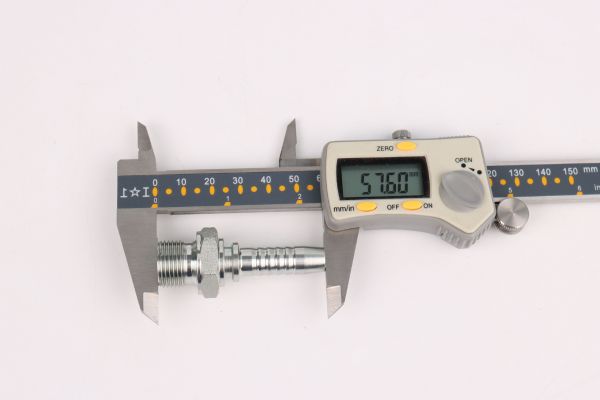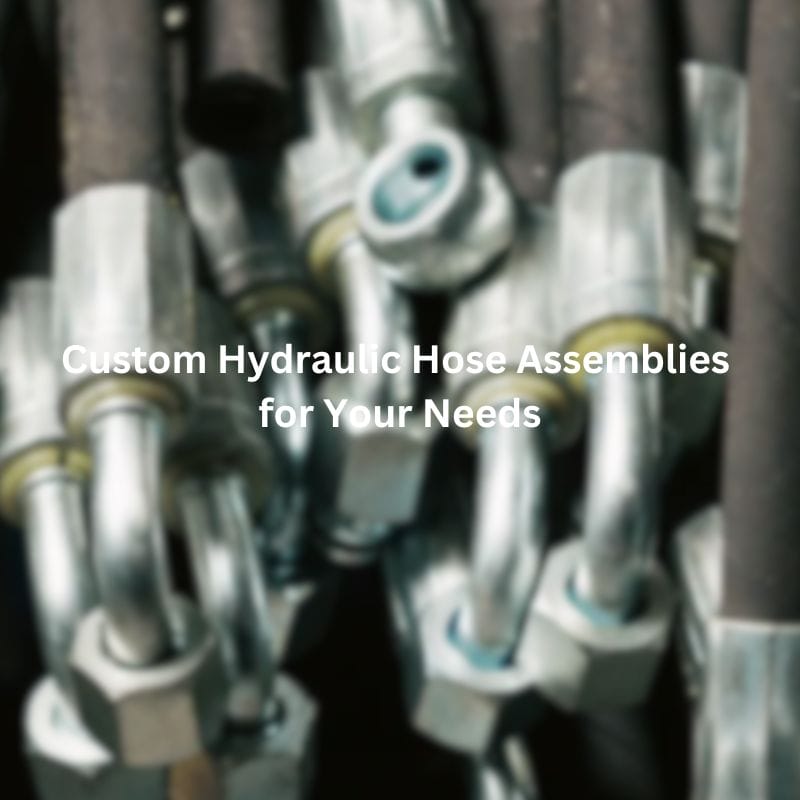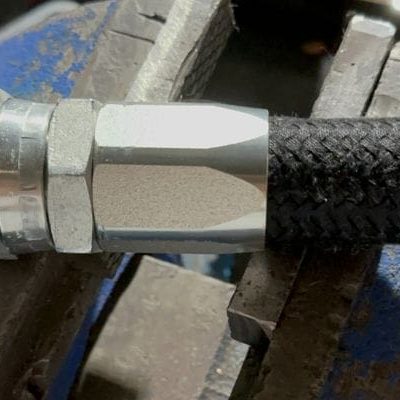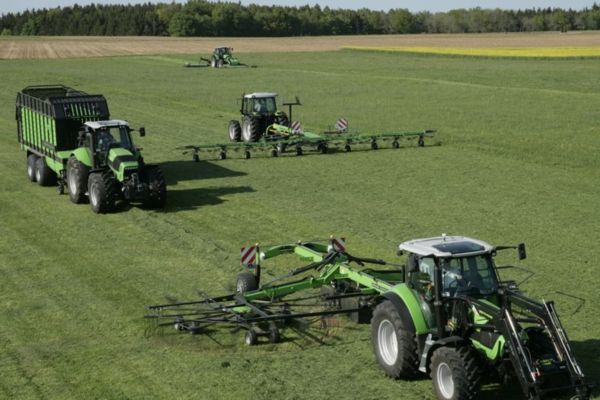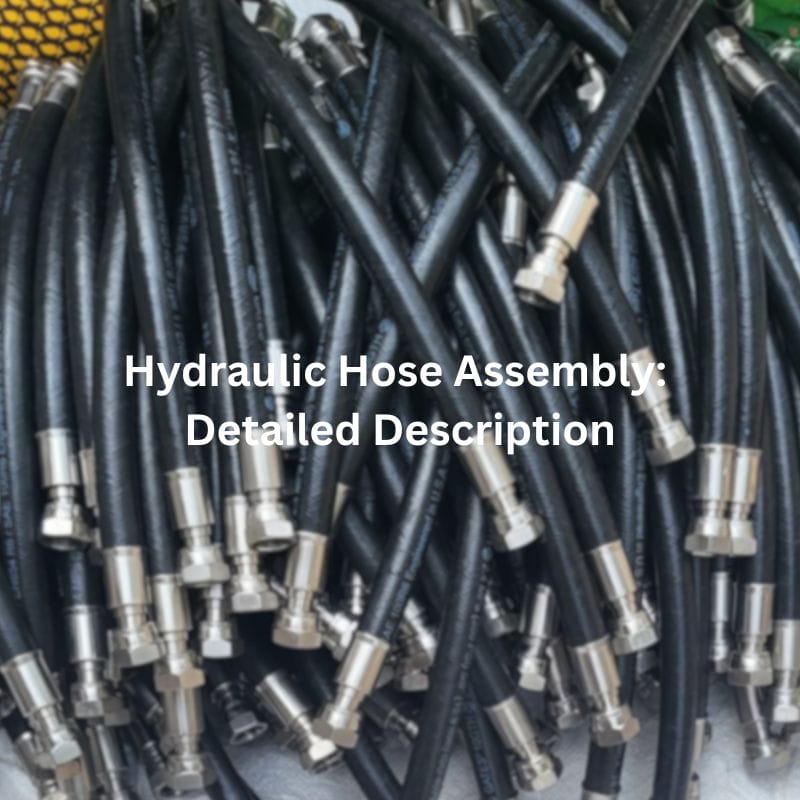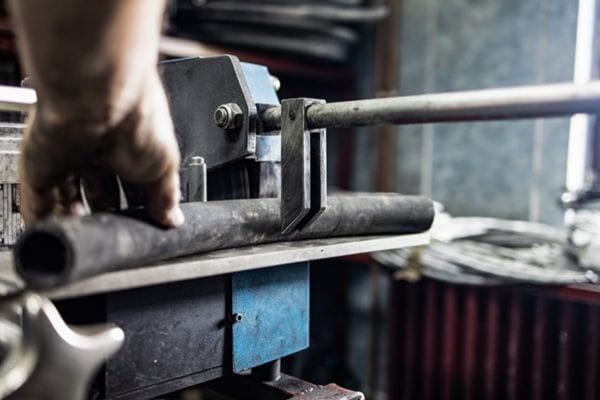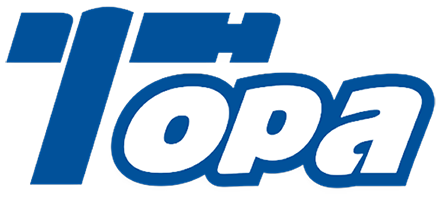Hydraulic Hoses Fail: Understanding Failure Modes and Fixes
Table of Contents
Introduction
Hydraulic hoses are indispensable components in a wide range of industries, from construction and agriculture to manufacturing and transportation. These hoses act as the lifelines of hydraulic systems, transferring fluid power necessary for the operation of heavy machinery, industrial equipment, and various automated processes. Without reliable hydraulic hoses, many of the mechanical functions that drive productivity and efficiency in these sectors would come to a halt. The robustness and functionality of hydraulic hoses directly impact the overall performance and safety of hydraulic systems, making them critical to industrial success.
Overview of Hydraulic Hoses
Hydraulic hoses are flexible tubes designed to convey hydraulic fluid to or between hydraulic components, valves, actuators, and other tools. They play a pivotal role in hydraulic systems by transferring the pressurized fluid that powers various machinery and equipment. Hydraulic hoses are engineered to withstand high pressures, extreme temperatures, and challenging environmental conditions, making them essential for a multitude of industrial applications. These hoses enable the transmission of force within hydraulic systems, converting fluid power into mechanical energy that drives the operation of heavy-duty equipment such as excavators, loaders, forklifts, and industrial presses.
Types of Hydraulic Hoses
Hydraulic hoses come in various types, each designed for specific applications and operational conditions. The most common types include:
Braided Hydraulic Hoses:
Single Wire Braid: Typically used for medium-pressure applications, these hoses have a single layer of braided wire reinforcement, providing flexibility and strength.
Double Wire Braid: Designed for higher-pressure applications, double-wire braid hoses have two layers of braided wire reinforcement, offering enhanced durability and pressure resistance.
Spiral Hydraulic Hoses:
These hoses feature multiple layers of spiral-wound wire reinforcement, making them suitable for extremely high-pressure applications. The spiral construction provides exceptional strength and flexibility, ensuring reliability in demanding conditions.
Thermoplastic Hydraulic Hoses:
Constructed from thermoplastic materials, these hoses are lightweight, flexible, and resistant to abrasion and chemicals. They are ideal for applications requiring high flexibility and low weight, such as mobile equipment and industrial robots.
Teflon (PTFE) Hydraulic Hoses:
Teflon hoses are known for their chemical resistance, high-temperature tolerance, and low friction. They are commonly used in applications involving aggressive chemicals, high temperatures, or where a non-stick surface is beneficial.

Key Components of a Hydraulic Hose
Hydraulic hoses are composed of several key components that work together to ensure optimal performance and reliability:
Inner Tube:
The inner tube is the innermost layer of the hose, responsible for carrying the hydraulic fluid. It is typically made from synthetic rubber or thermoplastic materials that are compatible with the hydraulic fluid and resistant to degradation. The inner tube must be flexible enough to bend without kinking yet durable enough to resist wear and tear.
Reinforcement:
The reinforcement layer provides the hose with its strength and pressure-bearing capacity. It can consist of braided or spiral-wound wire, textile fibers, or a combination of these materials. The reinforcement layer ensures the hose can withstand the high pressures typical in hydraulic systems without bursting or collapsing. The type and number of reinforcement layers vary depending on the hose’s intended application and pressure rating.
Outer Cover:
The outer cover is the external layer that protects the hose from environmental damage, abrasion, and chemicals. It is usually made from synthetic rubber or thermoplastic materials that are resistant to harsh conditions. The outer cover helps to safeguard the inner components of the hose, prolonging its service life and maintaining its integrity under demanding conditions.
Common Failure Modes of Hydraulic Hoses
Hydraulic hoses are engineered to perform reliably under demanding conditions, but they are not immune to failures. Identifying and understanding these failure modes is crucial for maintaining the effectiveness and safety of hydraulic systems. Here’s a detailed examination of common hydraulic hose failure modes:
Abrasion
Description of Abrasion and How It Occurs
Abrasion refers to the wear and tear that occurs when the outer cover of a hydraulic hose repeatedly rubs against rough, sharp, or abrasive surfaces. This mechanical friction gradually wears down the hose material, leading to thinning and potential exposure of the underlying reinforcement. As the protective outer layer deteriorates, the hose becomes more vulnerable to further damage, including leaks and bursts.
Signs of Abrasion Damage
Visible Wear Marks or Scratches: Look for noticeable scratches or grooves on the surface of the hose.
Exposed Reinforcement Wire or Textile Fibers: The outer cover may wear away to reveal the reinforcing wire or textile layers beneath.
Localized Thinning of the Outer Cover: Areas where the hose cover has become noticeably thinner are prone to failure.

Leakage
Causes of Leakage
Improper Fittings: Leaks often occur at connection points where fittings are either mismatched or not installed correctly. This can lead to inadequate sealing and eventual leakage.
Wear and Tear: Over time, the hose material itself can degrade due to repeated use and exposure, resulting in small cracks or holes that allow fluid to escape.
High Pressure: Operating the hose beyond its rated pressure can compromise its structural integrity, causing leaks or ruptures.
Identifying Leaks
Visual Inspection: Regularly check for signs of leakage, such as oil stains, wet spots, or drips around the hose and fittings. Look for areas where fluid might be escaping.
Pressure Tests: Use a pressure gauge to monitor the hose’s performance under operational conditions. A pressure drop can indicate a leak somewhere in the system.
Bursting
Reasons Behind Hose Bursting
Excessive Pressure: Hydraulic hoses have maximum pressure ratings. Operating above these limits can cause the hose to fail catastrophically.
Damaged Reinforcement: If the reinforcement layers of the hose are compromised due to abrasion, poor manufacturing, or overuse, the hose may not withstand the intended pressure, leading to bursting.
Consequences of Hose Bursts
Sudden Loss of Hydraulic Power: A burst hose results in an immediate loss of fluid pressure, causing equipment to fail suddenly.
Potential Safety Hazards: High-pressure fluid escaping from a burst hose can pose serious safety risks, including potential injuries to personnel.
Damage to Surrounding Equipment and Components: Fluid from a burst hose can damage nearby machinery and infrastructure, leading to additional repair costs and downtime.
Cracking
Factors Contributing to Hose Cracking
UV Exposure: Prolonged exposure to sunlight can degrade the hose material, making it brittle and prone to cracking.
Aging: As hydraulic hoses age, their materials can lose flexibility and become more susceptible to cracking.
Chemical Exposure: Exposure to certain chemicals can weaken the hose material, leading to cracks and reduced performance.
How to Spot Early Signs of Cracking
Visible Hairline Cracks: Look for small cracks on the surface of the hose. These may start as fine lines and can widen over time.
Brittleness or Stiffness: If the hose material feels unusually stiff or brittle, it may be indicative of underlying cracking.
Discoloration or Fading: Changes in color or fading of the hose cover can signal degradation and potential cracking.
Blistering
Causes of Blistering
Incompatible Fluids: Using hydraulic fluids that are not compatible with the hose material can cause the formation of blisters on the hose surface.
Chemical Reactions: Certain chemicals can react with the hose material, leading to blisters as the material degrades or expands.
Visual Identification of Blisters
Raised Areas or Bubbles: Blisters appear as raised areas or bubbles on the surface of the hose. They may look like small, soft bumps.
Soft Spots: Areas affected by blistering often feel different from the rest of the hose, with a softer texture or uneven surface.
Discoloration Around the Blisters: The area surrounding blisters may show discoloration or changes in texture.
Kinking
How Kinking Occurs
Improper Installation: If a hose is bent too sharply during installation or operation, it can cause kinking, which restricts fluid flow and damages the hose.
Bending Beyond Limits: Every hose has a minimum bend radius. Bending the hose beyond this limit can lead to kinks and potential failure.
Prevention Methods
Proper Installation: Ensure that hoses are installed with smooth, gradual bends and avoid sharp turns to prevent kinking.
Using Hose Guards: Hose guards or sleeves can provide additional support to prevent kinking and protect against external damage.
Regular Inspection: Frequently inspect hoses for any signs of bending or kinking, and correct issues promptly to prevent further damage.
Root Causes of Hydraulic Hose Failures
Hydraulic hose failures often result from underlying issues related to installation, fluid compatibility, environmental conditions, maintenance practices, or manufacturing defects. Identifying and addressing these root causes can significantly enhance the longevity and reliability of hydraulic hoses. Here’s a closer look at these root causes and how to mitigate them:
Improper Installation
Common Installation Mistakes
Incorrect Hose Length: Using a hose that is too long or too short can lead to tension and kinking.
Wrong Hose Type: Choosing a hose that does not meet the pressure or temperature requirements of the application.
Misaligned Fittings: Poorly aligned fittings can cause stress on the hose, leading to leaks or bursts.
Excessive Bending: Bending the hose beyond its minimum bend radius can damage the hose and reduce its lifespan.
Improper Thread Sealant Application
Select the Appropriate Hose: Ensure the hose meets the specifications for pressure, temperature, and fluid compatibility.
Proper Length and Routing: Measure and cut the hose to the correct length, and route it to minimize bends and stress.
Align Fittings Carefully: Align fittings properly and tighten them according to manufacturer specifications to avoid leaks and stress.
Avoid Sharp Bends: Follow the manufacturer’s guidelines for the minimum bend radius to prevent kinking and damage.
Incompatible Fluids
Impact of Using Incorrect Hydraulic Fluids
Chemical Reactions: Some fluids can react with hose materials, causing deterioration, blistering, or cracking.
Degradation of Hose Material: Incompatible fluids can break down the hose material, leading to leaks and failures.
Performance Issues: Using the wrong fluid can affect the performance of the hydraulic system, leading to inefficiencies or malfunctions.
Selecting the Right Fluid for Your System
Consult Manufacturer Specifications: Always choose fluids that are recommended by the hose and equipment manufacturers.
Consider Fluid Properties: Match the fluid’s chemical composition, temperature range, and viscosity with the hose’s capabilities.
Perform Compatibility Tests: If unsure, perform compatibility tests between the fluid and hose materials to ensure they work together without issues.
Environmental Factors
Effects of Extreme Temperatures, UV Exposure, and Moisture
Extreme Temperatures: Both high and low temperatures can affect the flexibility and strength of hydraulic hoses, potentially causing them to become brittle or lose elasticity.
UV Exposure: Prolonged exposure to sunlight can degrade the hose cover, leading to cracking and wear.
Moisture: Water and other moisture can lead to corrosion of metal components and degradation of the hose material, especially in environments with high humidity or exposure to chemicals.
Protective Measures Against Environmental Damage
Use Protective Covers: Install hose covers or sleeves to shield hoses from UV rays, abrasion, and chemical exposure.
Proper Storage: Store hoses in a cool, dry place away from direct sunlight and extreme temperatures when not in use.
Regular Inspections: Frequently inspect hoses for signs of environmental damage and replace them as needed.
Manufacturing Defects
Visual Inspection: Look for any obvious defects such as uneven wall thickness, misaligned layers, or irregularities in the hose cover.
Performance Testing: Conduct pressure tests and other performance evaluations to detect defects that may not be immediately visible.
Material Analysis: Examine the hose material for inconsistencies or weaknesses that could indicate manufacturing defects.
Fixes and Preventive Measures
Addressing the common failure modes of hydraulic hoses requires a proactive approach, involving proper hose selection, correct installation, regular inspection and maintenance, and the use of protective accessories. Implementing these practices can significantly enhance the reliability and lifespan of hydraulic hoses. Here’s a comprehensive guide to effective fixes and preventive measures:
Proper Hose Selection

Criteria for Selecting the Right Hose
Pressure Rating: Choose a hose with a pressure rating that exceeds the maximum pressure in your hydraulic system. This provides a safety margin to accommodate unexpected pressure spikes and operational stresses.
Material Compatibility: Ensure the hose material is compatible with the hydraulic fluid used in your system. Different materials react differently to various fluids, so selecting the correct material prevents chemical reactions that can lead to hose degradation.
Size: The hose size should match the requirements of your hydraulic system. This includes the internal diameter to ensure proper flow and the length to avoid unnecessary stress on the hose.
Correct Installation Techniques
Step-by-Step Guide to Proper Hose Installation
Preparation: Ensure that the hydraulic system is de-energized and depressurized before starting the installation process. Clean the installation area to remove any debris or contaminants.
Cutting the Hose: Measure and cut the hose to the correct length, ensuring that it matches the system’s requirements and is free from fraying or damage.
Attaching Fittings: Install fittings on both ends of the hose. Use the correct type of fitting and ensure it is aligned properly to prevent stress on the hose.
Connecting the Hose: Connect the hose to the hydraulic system, making sure the fittings are tightened according to the manufacturer’s specifications. Avoid over-tightening, which can damage the fittings or hose.
Testing: Once installed, test the system under operational conditions to check for leaks and ensure proper functionality. Monitor the hose for any signs of stress or misalignment.
Using Protective Accessories
Types of Hose Protection
Sleeves: Hose sleeves are protective covers made from materials like nylon or rubber. They shield the hose from abrasion, UV rays, and chemical exposure.
Guards: Hose guards are typically used to protect hoses from physical damage caused by impact or crushing. They are often made from rigid materials like metal or plastic.
Wraps: Hose wraps, such as spiral guards, provide additional protection against abrasion and environmental factors. They can also help in bundling multiple hoses together.
Installation and Benefits of Protective Accessories
Installation: Install protective accessories by sliding sleeves or wraps over the hose before connecting it to the system. Ensure that the protective layers cover any areas prone to damage and do not impede the hose’s flexibility or performance.
Benefits: Using protective accessories can extend the lifespan of hydraulic hoses by preventing damage from external factors. They also help in maintaining the safety and reliability of hydraulic systems by reducing the risk of hose failure.
Conclusion
Regular attention to hose selection, installation practices, and maintenance routines will help avoid common pitfalls and extend the operational life of hydraulic hoses. We encourage you to apply the insights gained from this post to your hydraulic systems. Implement best practices for hose selection and installation, adhere to a rigorous maintenance schedule, and utilize protective accessories to safeguard your equipment. If you encounter any uncertainties or complex issues, don’t hesitate to seek Topa expert advice to ensure optimal performance and reliability of your hydraulic systems.
FAQ
A hydraulic hose is a flexible tube used to transport hydraulic fluid between components in a hydraulic system. It typically consists of an inner tube, reinforcement layers, and an outer cover designed to withstand high pressure and harsh operating conditions.
Common signs of hydraulic hose failure include visible abrasion, leakage, bursting, cracking, blistering, and kinking. Look for oil stains, cracks on the hose surface, or any bulges and deformations that indicate damage.
Hydraulic hose leakage can be caused by improper fittings, wear and tear, or excessive pressure. Leaks often occur at connection points or due to damage to the hose material itself.
Prevent hydraulic hose failure by selecting the right hose for your application, ensuring proper installation, performing regular inspections and maintenance, and using protective accessories like sleeves and guards to shield the hose from damage.
Regular maintenance is crucial for detecting early signs of wear or damage, ensuring the hose operates within its designed parameters, and preventing unexpected failures that can lead to system downtime and safety hazards.
Replace your hydraulic hose if you notice significant signs of damage such as deep cracks, severe abrasion, leaks, or if the hose fails pressure tests. Regularly scheduled inspections can help determine when a hose needs to be replaced before it causes operational issues.

